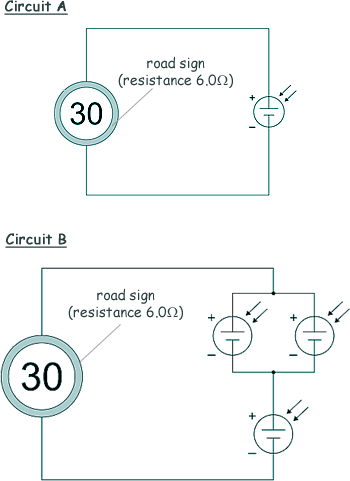Practical electricity experiment questions Q2. (a) An engineer wants to use solar cells to provide energy for a filament lamp in a road sign. The engineer first investigates the emf and internal resistance of a solar cell under typical operating conditions. She determines how the potential difference across the solar cell varies with current. The results are shown in the graph in below:
[2 marks]
[4 marks] (b) Solar cells convert solar energy to useful electrical energy in the road sign with an efficiency of 4.0%. The solar-cell supply used by the engineer has a total surface area of 32 cm2 . Calculate the minimum intensity, in W m–2 , of the sunlight needed to provide the minimum current of 75 mA to the road sign when it has a resistance of 6.0 Ω. [3 marks] (Total 9 marks) |
Follow me...
|







